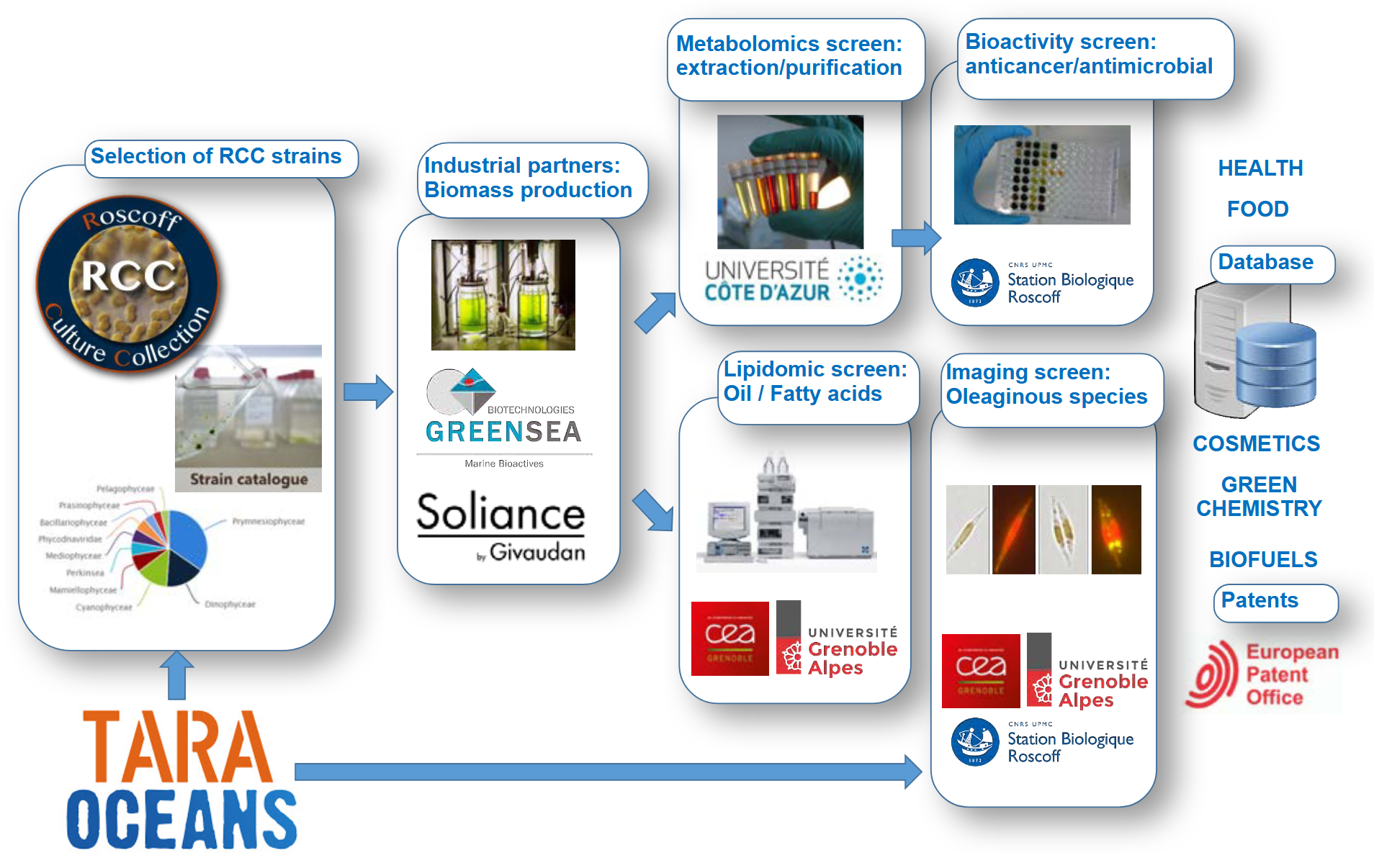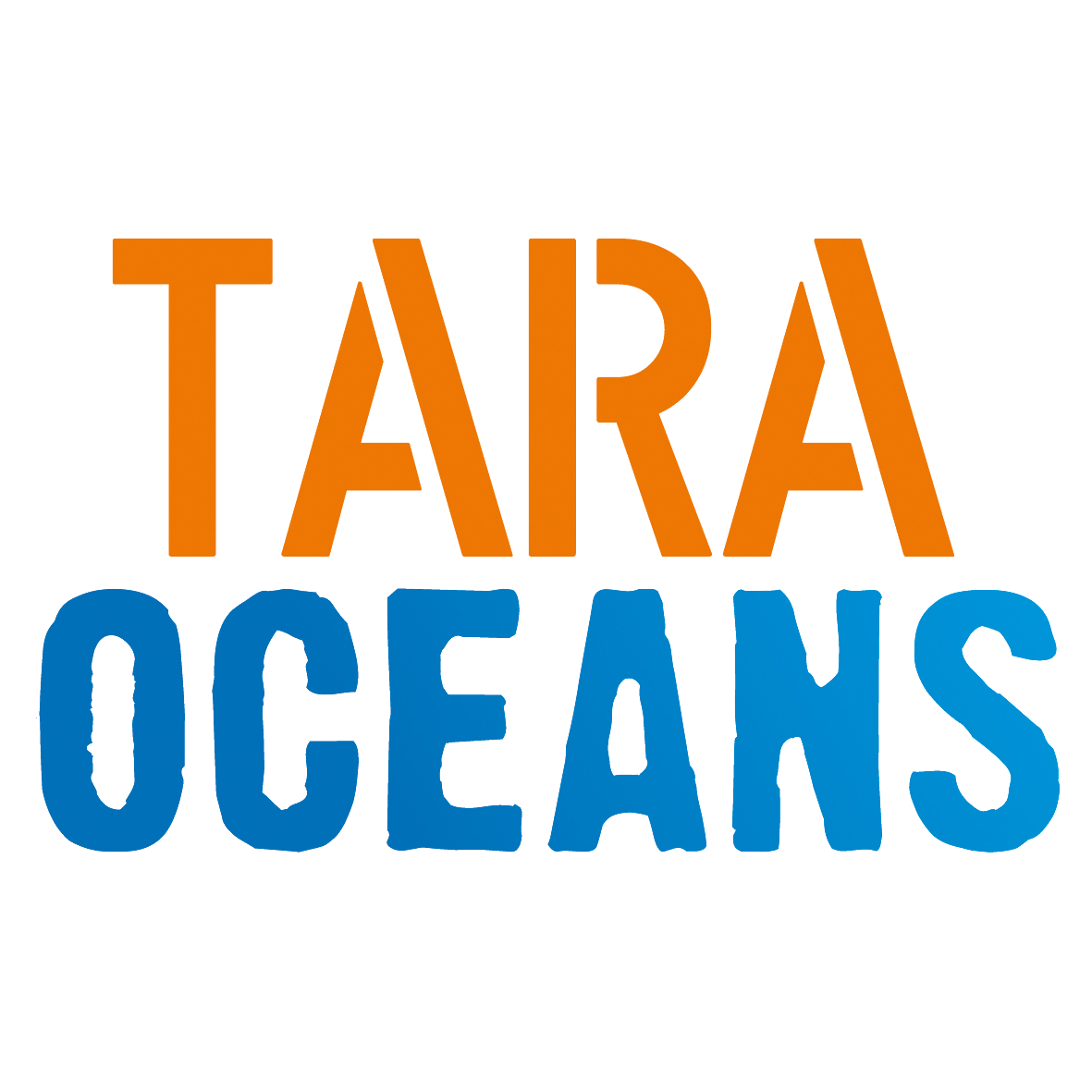Building upon the Tara Oceans knowledge base on global plankton eco-systems, we initiated an informed screening of plankton strains for secondary metabolites and lipidomics, with potential applications in biomedicine and pharmaceutics, bioenergy, green chemistry, and dermo-cosmetics. To reach this goal, we teamed up with industrial partners (Soliance-Givaudan and GreenSea) and developed together a strategy described in two articles (Abida et al., Marine Drugs, 2013; Baratte et al., Médecine et Sciences 2015), and based on screening a wide phylogenetic range of eukaryotic plankton strains maintained in the Roscoff Culture Collection (RCC – http://roscoff-culture-collection.org – which maintains >4,000 strains of marine microalgae, bacteria, and viruses). Following RCC strain selection, our workflow consists of: (i) biomass production by industrial partners; (ii) metabolomic screening (extraction, purification of compounds and their structural determination) by Nice University; (iii) bioactivity assays for anti-cancer and antimicrobial activities by, respectively, the KISSf facility at Roscoff and the University of Brest; (iv) lipidomic screening at the LPCV facility in Grenoble; (v) creation of a database of plankton chemical and biological activity information (Fig. 8). All extracts and purified compounds are frozen in microplates and stored in a collection of plankton extracts (Deliverable A6). The pipeline is now fully operational, and 17 strains (microalgae and marine fungi) have been chemically analysed in a test phase. Four of them produced an interesting array of chemical compounds, including some with promising bioactivity against Jurkat and U2OS tumoural cells, related to leukemia and osteosarcoma, respectively. Glycerolipids found in planktonic cells comprise fatty acids with an immense chemical diversity of chain lengths and number of double bonds, from 20-22 carbons and 5-6 double bonds (in omega-3 configuration), with high potential for biomedical, feed and food applications, to 8-14 carbons and at most one double bond, having a high potential as a surrogate for fossil fuel and scaffold for green chemistry. The Grenoble and Roscoff teams have developed all the imaging fluorimetric tools to monitor the screening of phytoplankton and identify wild strains with highest glycerolipid yields. In addition the Grenoble partner has built a lipidomic platform, which has become an international leader to analyse microalgal lipids, with results published regularly in Plant Physiology (2015, 2016, 2017) and Plant Cell (2015) and protected by a series of patents in 2014, 2015, 2016 and to be submitted in 2017. Samples of the RCC collection screened for secondary metabolites and bioactivity (see above) have been transferred to the Grenoble lipidomic platform for refined qualification and quantification of glycerolipids. The project is today ready to start a large-scale screening of the Tara Oceans samples via high throughput fluorimetry imaging, and of RCC plankton strains using the analytical pipeline developed at the Grenoble lipidomic platform.

Figure 8. The Tara Oceans OCEANOMICS public-private workflow for extraction, purification, and structural characterization of bioactive planktonic natural products.
